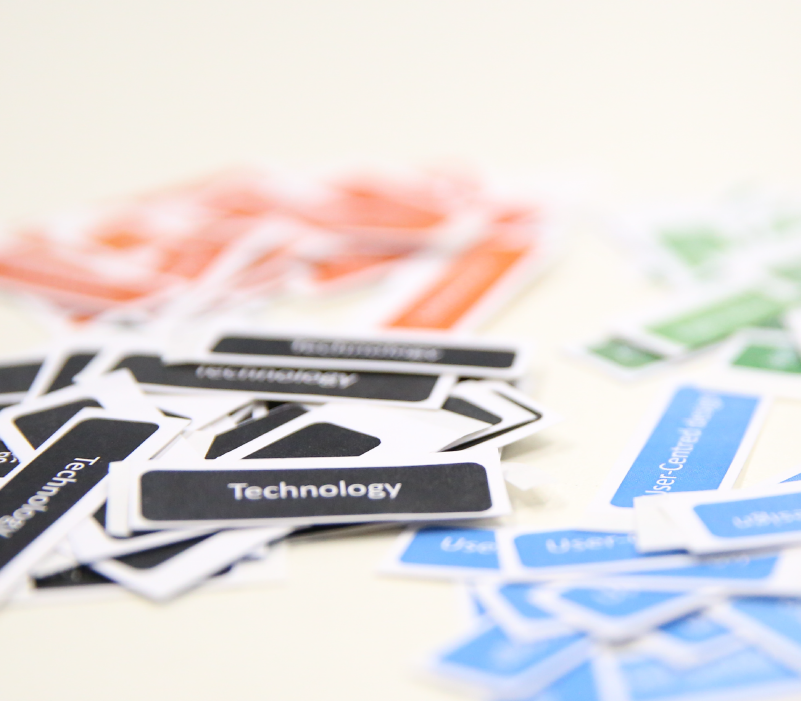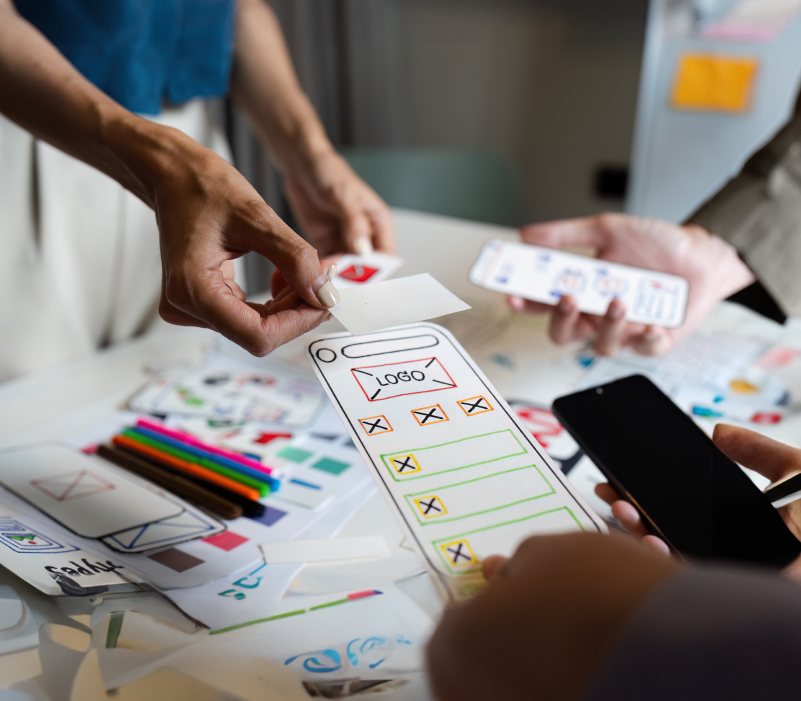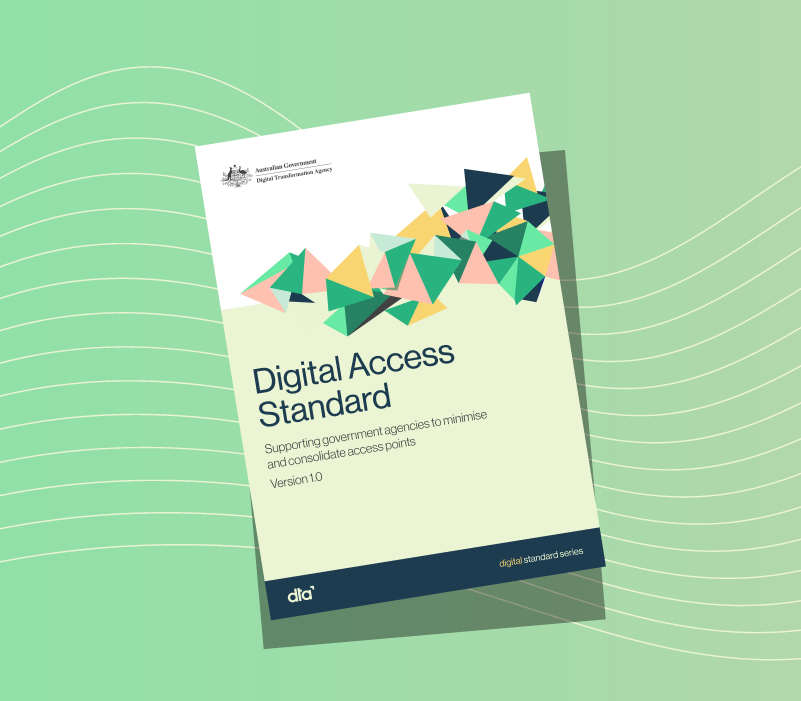-
Suggested activities to apply this criterion
Consider diverse user needs from the outset
Listen to and understand diverse user needs: Consider diverse user needs from the outset. This will make sure services cater to the greatest range of users possible. Consider the different identities, characteristics and perspectives of users to make sure the digital service is welcoming and inclusive for all.
Conduct usability testing with diverse user groups: Do usability testing with individuals from diverse backgrounds, including those with different abilities, ages and cultural contexts. Adopt inclusive prototyping techniques to simulate the experiences of users with different abilities and identify potential challenges. Recognise that various aspects of a person’s identity, such as race, gender and age, all work together to shape their digital experience.
Co-design the digital service and its accompanying artifacts
Co-design with users: Involve users throughout the Service Design and Delivery Process to make sure their perspectives, needs and feedback are incorporated into the final service. Encourage shared ownership by co-designing accompanying artifacts, such as tutorials and guides, using language that is meaningful to all.
Consider cohort-specific digital inclusion requirements (outlined below): Tailor the digital service to meet the specific needs of user groups and promote inclusion to make sure support is provided at the appropriate level. Consider how to apply the following cohort specific requirements when designing and delivering digital services.
-
-
Meeting Digital Inclusion Standard criteria
The Digital Inclusion Standard is made up of 5 criteria that help government agencies design and deliver inclusive and accessible services for all people and business.
To successfully apply the Digital Inclusion Standard, agencies must meet all the criteria.
Agencies are strongly encouraged to consider how the criteria applies across the whole service lifecycle.
It is recommended that agencies also consider the non-digital experience of users to make sure services are inclusive and accessible for all.
-
Alignment with the Investment Oversight Framework
Agencies are expected to consider how their proposal aligns to the Digital Inclusion Standard throughout all the Digital and ICT Investment Oversight Framework (IOF) states.
During the design phase, agencies should consider how to apply the Digital Inclusion Standard during the Strategic planning and Prioritisation states to align with the strategic outcomes of Government.
From 1 January 2025, proposals for new digital services will be assessed through the IOF at the following states:
- Contestability state: The Digital Inclusion Standard will be assessed as part of the existing ICT Investment Approval Process. Agencies must demonstrate to the DTA how they have, or will, apply the Digital Inclusion Standard and provide evidence to support it through the Digital Capability Assessment Process (DCAP). Guidance of what evidence is required will be provided as part of the DCAP Agency Guide.
- Assurance state: The Digital Inclusion Standard will be assessed through the Assurance Framework. Agencies will be required to demonstrate to the DTA how they applied the Digital Inclusion Standard and provide supporting evidence.
For new services, agencies should consider obligations under the Digital Inclusion Standard throughout the Sourcing and Operations states.
For existing services from 1 January 2026, services will be assessed at relevant points throughout the Operations state of the IOF: for example, through the Approved Programs Collection (also known as Wave).
Additional information on how the DTA will assess compliance with the Digital Inclusion Standard is provided in the Compliance and Reporting Framework. This framework will continue to be evaluated and is expected to mature over time.
Off -
-
Exemptions
The DTA acknowledge that some agencies may be unable to meet one or more of the criteria set out by the Digital Inclusion Standard due to a range of circumstances. These circumstances may include but are not limited to:
- legacy technology barriers that cannot be reasonably overcome.
- substantial financial burden caused by changing a service to meet criteria.
Exemptions may be granted for one or more of the criteria set out by the Digital Inclusion Standard. This will be assessed on a case-by-case basis. Exemptions must be applied for through the DTA.
Further information can be found in the Digital Experience Policy Exemption Guide.
Note: Even if your service or website is not covered by the Digital Inclusion Standard, or if you receive an exemption, you may still have related obligations under relevant Australian legislation: for example, accessibility requirements under the Disability Discrimination Act 1992.
Off -
Measuring success of the Digital Inclusion Standard
We will measure success by reporting on agencies’ compliance with the Digital Inclusion Standard.
The DTA will provide oversight of adherence to the Digital Inclusion Standard by collecting self-assessed and quantitative data from agencies. The Digital Inclusion Standard will be implemented in line with existing processes, such as the IOF and Wave, where appropriate, to reduce administrative and compliance burden on agencies.
Agencies are required to report on their compliance with the Digital Inclusion Standard to the DTA within specified timeframes and maintain continuous improvement against performance measures.
- For new services, this will apply from 1 January 2025 through existing processes as highlighted in the Alignment with the IOF section above.
- For existing public-facing services, this will apply from 1 January 2026 through existing mechanisms, such as Wave, where appropriate.
The DTA will engage with stakeholders on compliance implications and develop a reporting framework prior to reporting requirements coming into place.
Off -
-
-
Introducing the Digital Inclusion Standard
The Digital Inclusion Standard incorporates a wealth of thinking and research traditionally residing in siloed user groups. It seeks to build upon and elevate best practices to a whole-of-government level to foster digital inclusion and accessibility for all people and business.
The Digital Inclusion Standard is part of a suite of standards and guidance that sits within the Digital Experience Policy. The Digital Experience Policy supports a whole-of-government focus on improving the experience for people and business interacting digitally with government information and services. The Digital Experience Policy includes a suite of standards and guidance that supports agencies to deliver cohesive and consistent digital experiences, including but not limited to the Digital Service Standard, the Digital Performance Standard and the Digital Access Standard.
The Digital Inclusion Standard builds on the new Digital Service Standard Criterion 3 – Leave No One Behind, forming part of a set of standards and guidelines committed to improving digital experiences across government.
The scope of the Digital Inclusion Standard aligns to a digital experience (as defined in the Services covered by the Digital Inclusion Standard page). The Digital Inclusion Standard does not attempt to address barriers related to:
- access or infrastructure
- affordability
- non-digital services.
These issues are the focus of a range of government digital inclusion programs and initiatives.
Off -
-
-
Example – new services designed or redesigned from 1 July 2024
Any new digital or ICT-enabled proposals coming forward in the 2024-25 MYEFO context will need to meet the requirements of the Digital Service Standard Version 2.0, as per the Investment Oversight Framework.
-
Phase 2 – Existing public-facing services
From 1 July 2025, services that meet the following criteria will be required to meet Version 2.0 of the Digital Service Standard:
- public-facing
- owned by non-corporate Commonwealth entities
- all existing informational and transactional services.
Note: existing staff facing services are excluded.
-
Example – existing public-facing services
Public-facing services in existence prior to 1 July 2024 will be required to update their services to meet the requirements under Version 2.0 of the Digital Service Standard from 1 July 2025 or seek an exemption from the DTA.
-
Introducing the Digital Access Standard
The Digital Access Standard is not mandating one login for users or a single front door for government digital services, but careful consideration into the creation of new access points and investigation into the benefits of the consolidation of multiple access points.
Australian Government digital services are currently dispersed across multiple agency websites, portals and apps. This means that people need to understand how government works to find the support and services they need, leaving them to navigate a fragmented and decentralised digital government landscape. The myGov User Audit called for a consolidation of digital services across government to stop this situation from worsening. A coordinated approach moving government agencies towards a more centralised digital landscape is needed to support people in navigating government services.
The Digital Access Standard is part of a suite of standards and guidance that sits within the Digital Experience Policy. The Digital Experience Policy supports a whole-of-government focus on improving the experience for people and business interacting digitally with government information and services. The Digital Experience Policy includes a suite of standards and guidance that supports agencies to deliver cohesive and consistent digital experiences, including the Digital Service Standard, the Digital Inclusion Standard and the Digital Performance Standard.
To support a common experience for users, the Digital Access Standard extends on Criterion 4 ‘Connect services’ and Criterion 6 ‘Don’t re-invent the wheel’ of the Digital Service Standard. The Digital Access Standard sets criteria that agencies must meet to determine where their new digital service fits into the whole-of-government digital service landscape. The criteria will help agencies assess if a new access point is required or if they can reuse existing platforms and capabilities.
This policy will ensure agencies design and deliver digital services in consideration of the broader government landscape, including the Data and Digital Government Strategy, the Digital Service Standard and the Digital and ICT Reuse Policy.
The Digital Access Standard supports the Data and Digital Government Strategy and Digital Service Standard by promoting consistency across digital services and making sure services:
- are accessible
- are secure
- are transparent
- meet the needs of people and business.
-
-
Connect with the digital community
Share, build or learn digital experience and skills with training and events, and collaborate with peers across government.








